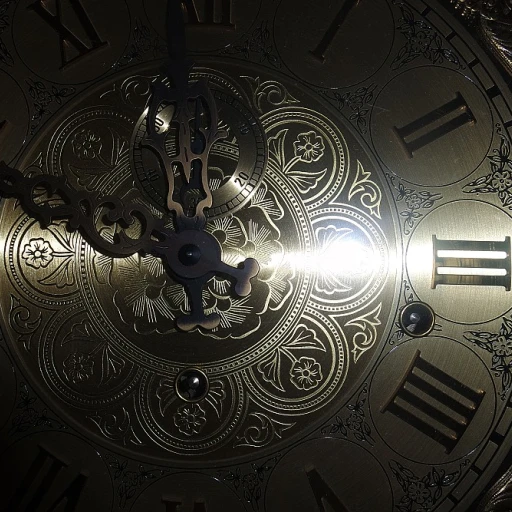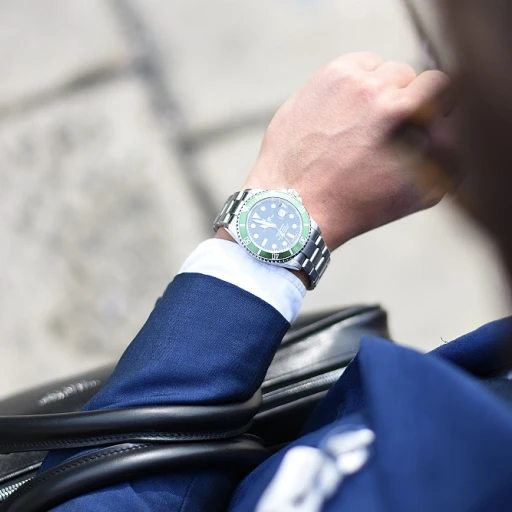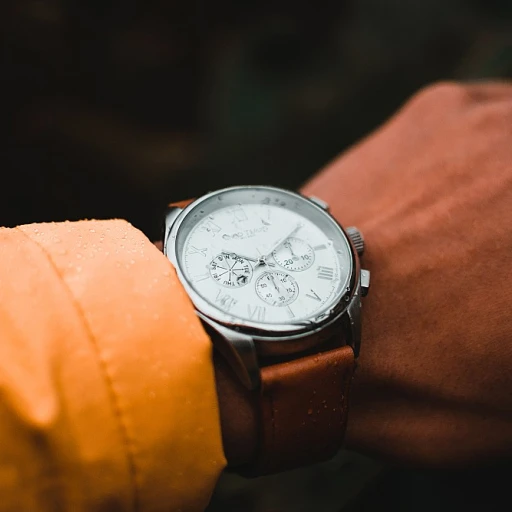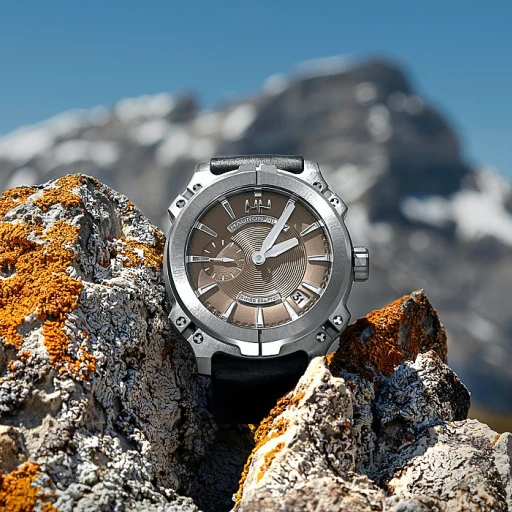Why Chronograph Watches Are a Must-Have
The Allure of the Multifunctional Timepiece
In the realm of horology, few features captivate watch enthusiasts and collectors like the chronograph. Its intricate mechanics and multifunctional prowess elevate it beyond mere timekeeping, transforming it into a symbol of innovation and precision. But why should a luxury chronograph watch be a staple in your collection?
Chronographs offer a unique blend of aesthetic appeal and technical capability. Combining the elegance expected from luxury watches with the practicality of a stopwatch function, these timepieces are both alluring and functional. Whether you are timing laps on the racetrack or simply appreciating its engineering, a chronograph adds significant value to any watch collection.
Moreover, the chronograph's history is intertwined with iconic moments in timekeeping. Its roots lie in the need for precise measurement in various fields, from aviation to motorsports. This storied past provides a connection to the grandeur of human achievement, which further enhances the watch's desirability.
As you delve deeper into this guide, you will encounter the crème de la crème of luxury chronographs, like the undeniable favorites, Rolex Daytona and Patek Philippe Nautilus. You will also explore the intricacies of their movements and the choices between exquisite materials like rose gold and stainless steel. When considering a chronograph, remember it’s not just about owning a watch—it's about experiencing a legacy. And for those passionate about the evolution of timekeeping, understanding the "innovative complications in luxury watches" is essential.
Top Picks: Rolex Daytona and Patek Philippe Nautilus
Iconic Models Worthy of Your Attention
In the realm of luxury chronograph watches, few names evoke prestige and excellence like the Rolex Daytona and the Patek Philippe Nautilus. These two timepieces are not merely instruments to tell time but masterpieces that showcase the harmonious blend of craftsmanship and style.
The Rolex Daytona, revered for its timeless allure and association with motor racing, stands as a symbol of speed and precision. Its robust design coupled with an intricate chronograph movement makes it a favorite among watch aficionados. On the other hand, the Patek Philippe Nautilus, with its iconic porthole-inspired design, remains a statement piece in any collection. This watch's elegance is matched only by the complexity of its movement, making it a covetable companion for those who appreciate refined artistry.
The Intricate Dance of Gears and Precision
Chronograph enthusiasts are often drawn to the intricate inner workings of these watches. Understanding the difference between an automatic and manually wound movement can significantly enhance one's appreciation of these timepieces. Automatic movements harness the kinetic energy generated by the wearer's wrist, allowing for a seamless operation without manual intervention, while the manually wound counterparts require regular winding to maintain their precision.
For those seeking an in-depth understanding of cutting-edge watch mechanisms, an exploration of the tourbillon offers a glimpse into the fascinating innovations that define luxury watchmaking today. Delve into the heart of your timepiece and imagine the micro-engineering marvels that ensure your watch remains a true timekeeping masterpiece.
Glimpse into luxury watch innovation with our in-depth analysis of the tourbillon's role in chronograph perfection.
The Movement: Automatic vs. Manually Wound
The Intricacies of Movement: Automatic and Manual Mechanisms
Luxury chronograph watches are celebrated not only for their aesthetic appeal but also for their intricate movements. As watch enthusiasts know, the heart of any luxury timepiece is its movement, and when it comes to chronographs, the debate often revolves around two primary types: automatic and manually wound.
Automatic movements, prized for their self-winding capability, use the natural motion of the wearer’s wrist to keep the watch ticking. This means that with regular wear, there's no need for winding—a feature that appeals to those who appreciate convenience without sacrificing elegance. Many luxury watch brands have perfected these movements, resulting in pieces that are not only precise but also a true joy to wear. Watches from renowned brands like Rolex and Patek Philippe often feature this precise engineering, adding a touch of luxury to functionality.
On the other hand, manually wound chronograph watches evoke a sense of tradition and highlight the unique connection between the timepiece and its owner. The process of winding a watch becomes a cherished daily ritual, adding to the charm and exclusivity of these timepieces. Collectors who cherish craftsmanship often gravitate towards manually wound watches for their authenticity and the tactile experience they offer.
Both movements have their own set of admirers, and choosing between them depends largely on personal preference. Whether you’re drawn to the effortless elegance of automatic movements or the traditional allure of manually wound mechanisms, these masterful feats of horological engineering are pivotal in defining the luxury chronograph experience.
To explore more about intricate watchmaking, delve into Cartier's artistry with the
Cartier Panthère watch for an exquisite blend of luxury and elegance.
Materials Matter: Rose Gold vs. Stainless Steel
Luxury Chronograph Watch Materials: What Sets Them Apart
When discussing the allure of luxury chronograph watches, the materials used in their creation play a pivotal role. These carefully selected components not only enhance the watch's visual appeal but also affect its performance and durability. In our previous sections, we've delved into some of the most sought-after luxury models. Now, let's explore how the choice between rose gold and stainless steel can make or break your decision.
Rose gold, with its warm and rich hues, offers a touch of opulence that appeals to those who prefer a classic yet distinctive look. This material is a fusion of gold with copper and sometimes silver, creating a resilient alloy that's as sturdy as it is beautiful. Rose gold chronographs often exude luxury and are perfect suitors for events that call for a bold statement. These watches are not just about aesthetics; they offer durability comparable to other robust materials.
On the flip side, stainless steel is revered for its modern, understated elegance and unmatched durability. It's a versatile material that suits both casual and formal settings, making it a popular choice among watch enthusiasts. Stainless steel chronographs are resistant to corrosion and wear, promising longevity with minimal maintenance. If you value practicality alongside style, stainless steel offers a sleek solution.
Ultimately, the decision between rose gold and stainless steel comes down to personal preference and lifestyle. Each material has its unique advantages, reflecting the diverse options available in the luxury chronograph market. As we move forward in our exploration of these timepieces, remember that every element, from the movement to the material, is a testament to the art of watchmaking.
Water Resistance and Durability
Submersion Style: Understanding Water Resistance in Chronograph Watches
When investing in a luxury chronograph watch, it is crucial to consider its water resistance and overall durability. These features not only protect your investment but also enhance the watch's versatility, enabling you to transition seamlessly from boardroom meetings to aquatic adventures. While Part 2 showcases models like the Rolex Daytona and Patek Philippe Nautilus, both brands with a storied history of creating robust timepieces, it's worth remembering that water resistance is a standout feature across the chronograph landscape.
Luxury chronographs often come with varying degrees of water resistance, typically measured in meters or bar. This specification indicates how deep a watch can plunge without allowing water to breach its intricate internal mechanisms. For instance, chronographs with a water resistance of up to 100 meters are suitable for swimming and snorkeling, while those with a resistance over 200 meters may even accompany you on a dive. Such versatility allows wearers to rely on their watches in different settings without compromising style or performance.
The materials used in constructing the watch also play a pivotal role in determining its durability. As we explored previously, luxury chronographs can be crafted from materials ranging from elegant rose gold to resilient stainless steel. The choice of material not only affects the aesthetics but also influences how the watch withstands environmental stressors like moisture and temperature fluctuations.
To ensure continued performance and longevity, it’s advisable for watch enthusiasts to familiarize themselves with the maintenance practices associated with their timepieces’ specific water resistance levels. Regular servicing by authorized professionals helps guarantee that seals remain intact, keeping the watch secure from water ingress.
In conclusion, when selecting a luxury chronograph, give careful consideration to water resistance and durability alongside style and brand heritage. Understanding these elements ensures that your timepiece is not merely an accessory but a steadfast companion in all of life's endeavors.
The Power of Brand Heritage: Omega, Seiko, and More
Legacy of Timeless Craftsmanship
When it comes to luxury chronograph watches, the brand's heritage plays a significant role in capturing the allure and precision of these iconic timepieces. A brand's legacy offers not only an assurance of quality and craftsmanship, but also a connection to a storied history that resonates with watch enthusiasts.
Take Omega, for instance – a brand synonymous with innovation and achievement. With its pioneering involvement in space exploration and its prestigious presence at the Olympic Games, Omega's legacy is one of groundbreaking accomplishments. The precision and style exhibited in each of their chronographs reflect this rich history, making them a preferred choice for those seeking both performance and heritage.
Similarly, Seiko has carved a distinct niche in the world of luxury watches with its fusion of traditional craftsmanship and cutting-edge technology. Homing the art of Japanese artistry, Seiko's chronographs are a testament to their unrelenting pursuit of excellence and timeless elegance.
It's crucial to mention that the allure of a brand's legacy isn't merely a marketing tactic. It is embedded in the timepiece's design, the quality of materials chosen, and the meticulous attention to detail that demonstrates years of expertise.
Beyond Omega and Seiko, the world of luxury chronographs is teeming with brands that boast histories as fascinating as the watches they create. Each brand's contribution adds a unique chapter to the ever-evolving narrative of horological art, inviting enthusiasts to become part of a tradition that transcends time.
By understanding the history and heritage behind these iconic brands, collectors can appreciate their chronographs on a deeper level. Whether you're drawn to the regal elegance of a classic Omega Speedmaster or the innovative spirit of a Seiko Prospex, the legacy that accompanies each watch promises more than just accurate timekeeping – it offers a piece of timeless craftsmanship steeped in history.












